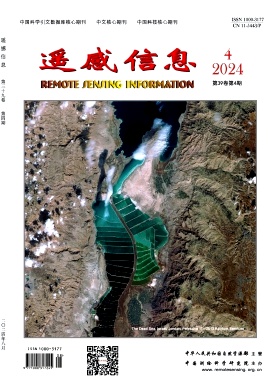Nature-inspired search method for IoT-based water leakage location detection system
引用次数: 1
Abstract
Detecting water leakage and reporting the leakage timely is one of the challenges faced by water distributing companies in developing nations. This paper employs a nature-inspired search method for optimal location search to water leakage sources for Ghana Water and Sewage Services Company. The nature-inspired method aid in mapping IoT-edge computing devices used by the water and sewage workers, especially in the cities and urban areas, to find and locate leaked pipelines. Once, a water and sewage worker receive a trigger from any location that there are leakages, the algorithm generates the location data which automatically processes the distance, geographic location, and direction. In this paper, a nature-inspired algorithm based on the behaviour of a Kestrel bird was used as the mapping function. The developed algorithm was tested and evaluated using pre-defined and random locations based on their latitudes and longitudinal data. The proposed algorithm was evaluated against BAT algorithm. Findings from the data indicated that the proposed KSA used as mapping function, was successful in providing the optimal distance after receiving water leakage geographic location data from IoT edge computing devices.基于物联网的漏水定位检测系统的自然搜索方法
检测漏水并及时报告漏水是发展中国家供水公司面临的挑战之一。本文采用自然启发的搜索方法对加纳供水和污水服务公司的漏水源头进行最优位置搜索。这种受自然启发的方法有助于绘制供水和污水处理工人使用的物联网边缘计算设备的地图,特别是在城市和城市地区,以查找和定位泄漏的管道。一旦供水和污水处理工人从任何地方收到漏水的触发信号,该算法就会生成位置数据,并自动处理距离、地理位置和方向。本文采用一种基于红隼行为的自然启发算法作为映射函数。根据纬度和纵向数据,使用预定义的随机地点对开发的算法进行了测试和评估。将该算法与BAT算法进行比较。数据结果表明,所提出的KSA作为映射函数,在从物联网边缘计算设备接收漏水地理位置数据后,成功地提供了最佳距离。
本文章由计算机程序翻译,如有差异,请以英文原文为准。
求助全文
约1分钟内获得全文
求助全文
来源期刊
自引率
0.00%
发文量
3984
期刊介绍:
Remote Sensing Information is a bimonthly academic journal supervised by the Ministry of Natural Resources of the People's Republic of China and sponsored by China Academy of Surveying and Mapping Science. Since its inception in 1986, it has been one of the authoritative journals in the field of remote sensing in China.In 2014, it was recognised as one of the first batch of national academic journals, and was awarded the honours of Core Journals of China Science Citation Database, Chinese Core Journals, and Core Journals of Science and Technology of China. The journal won the Excellence Award (First Prize) of the National Excellent Surveying, Mapping and Geographic Information Journal Award in 2011 and 2017 respectively.
Remote Sensing Information is dedicated to reporting the cutting-edge theoretical and applied results of remote sensing science and technology, promoting academic exchanges at home and abroad, and promoting the application of remote sensing science and technology and industrial development. The journal adheres to the principles of openness, fairness and professionalism, abides by the anonymous review system of peer experts, and has good social credibility. The main columns include Review, Theoretical Research, Innovative Applications, Special Reports, International News, Famous Experts' Forum, Geographic National Condition Monitoring, etc., covering various fields such as surveying and mapping, forestry, agriculture, geology, meteorology, ocean, environment, national defence and so on.
Remote Sensing Information aims to provide a high-level academic exchange platform for experts and scholars in the field of remote sensing at home and abroad, to enhance academic influence, and to play a role in promoting and supporting the protection of natural resources, green technology innovation, and the construction of ecological civilisation.

 求助内容:
求助内容: 应助结果提醒方式:
应助结果提醒方式:


